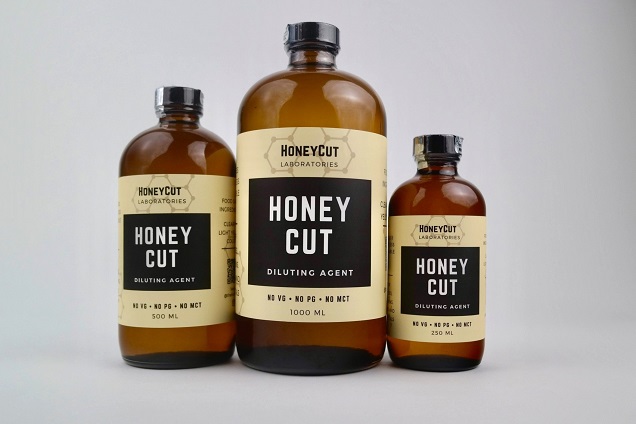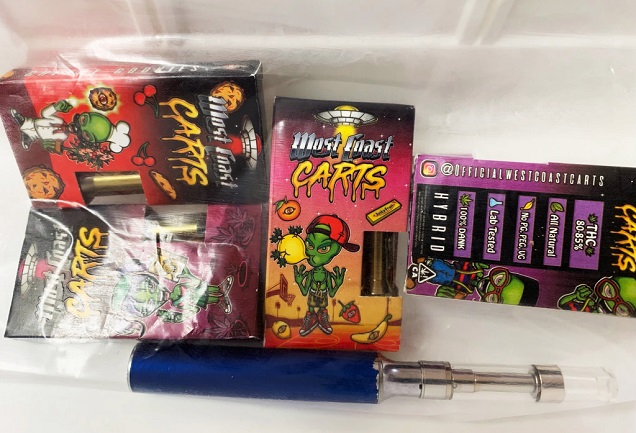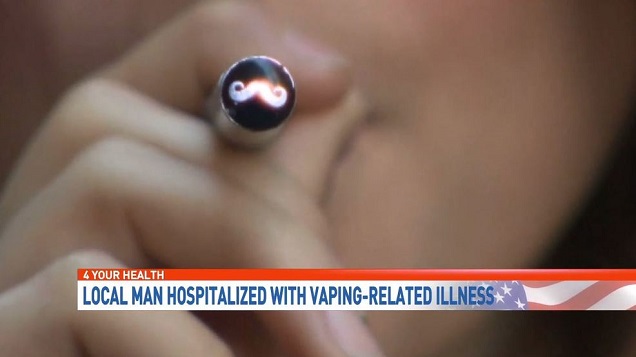
You’d have to have been living under a rock, with no cell phone, hundreds of miles away from society and with your fingers in your ears to have missed the recent furor over the “vaping related deaths” in the US.
With the death count recently rising to six, the finger is pointed firmly at vaping, with the CDC stating, “Until we know more, if you are concerned about these specific health risks, CDC recommends that you consider refraining from using e-cigarette or vaping products.”
The secretary of the Department of Health and Environment for Kansas went even further, saying, “If you or a loved one is vaping, please stop. The recent deaths across our country, combined with hundreds of reported lung injury cases continue to intensify.”
Unsurprisingly, the news of these deaths has spread at startling speed, and people are scared. A “mystery illness” is killing vapers, striking down young, otherwise-healthy people who see a rapid decline in their health, difficulty breathing, coughing, chest pain and more, with 6 of the 380-plus cases so resulting in death.
The question is: are our e-cigarettes going to kill us? Should we actually stop vaping?
Key Facts
- 6 people have died and at least 380 have gotten ill from a lung-related condition becoming more common throughout the US.
- The fact that the illness is acute and that all of the cases come from America makes it highly unlikely that nicotine vaping – which has been widespread around the world for a decade – is to blame.
- Authorities still aren’t sure exactly what the cause is. Some cases appear to involve nicotine e-cigarettes and no other products, but the vast majority are linked to THC vaping.
- The most likely explanation so far is vitamin E acetate, a thickening agent used in THC oils. This is most common on the black market, but it’s possible that legal sellers are using this too. Be cautious.
- For avoidance of doubt: this issue is related to additives likely only present in THC products, not nicotine vaping.
- THC vapers are advised to avoid street-bought THC cartridges. If you have some, throw them away. The safest advice is to vaporize dry plant material instead of any type of oil or liquid, but if you do use a liquid, ensure it’s not actual oil and be 100 percent sure it doesn’t contain thickening agents.
What’s Happened So Far
Before we get into the probable cause of the outbreak and discussing the (counter-productive) response from the authorities in the US, it’s worth going over what’s happened so far. The first signs of a problem came in August, when the CDC reported that they were investigating a “severe pulmonary disease among people who use e-cigarettes.” At this point, there were only 94 cases under investigation, but that rose quickly. On the 23rd, the first death was reported (in Illinois) and it quickly became national news. Vaping was in the cross-hairs straight away, because the individual was reportedly a vaper.
Soon, the numbers of cases rose, and along with it, more deaths were reported, from Oregon, Indiana, Minnesota, California and the most recent (on Tuesday the 10th) from Kansas. According to the CDC, by Wednesday there were 380 confirmed cases of the “mystery illness,” although it’s possible that the number is higher (and certainly will be by now).
The illness is focused on the lungs, but not all of the symptoms occur there. According to a journal article covering some of the cases, the most common symptoms are shortness of breath, cough (non-productive), nausea, fever, vomiting, diarrhea, chest pain and abdominal pain. Of those covered in the study, 91 percent had abnormal chest scans, and when further tests were conducted there were abnormalities in pretty much every case, including opacities (a cloudiness) in both lungs. Most of the patients had to go to hospital, and stayed for an average of 6 days.

Although the specific illness hasn’t been identified, it does have similarities with lipoid pneumonia, which is caused by the inhalation of fats or oils, or similar conditions like clinical pneumonitis or acute respiratory distress syndrome. The key point is that it seems to be an acute condition – something that develops suddenly, unlike smoking-related diseases, for example, that take decades to really manifest – and this means that the cause is probably something pretty new.
The median age for those affected was 19, and as the article states: “All patients had a history of use of e-cigarettes and related products within the 90 days before symptom onset” (my italics). The most commonly used products were THC products, by 4/5 of those interviewed in-depth, compared to 3/5 who had vaped nicotine e-cigarettes. Notably, patients were twice as likely to only use THC vaping products compared to nicotine-based vaping products, but 44 percent of patients had vaped both types of products. For cannabis vaping, “Dank Vape” was the most commonly used brand.
Is Nicotine Vaping the Cause? A Quick Look at the Facts

The cause of the outbreak is still unclear, to some extent, and the investigation is ongoing. It’s unlikely that authorities will settle on an official cause particularly soon. The wording of most newspaper articles and official statements on the issue have kept all options on the table. They point out, “No one substance has been identified in all of the samples tested,” and warn about nicotine vaping alongside THC or cannabis vaping.
So could the illness be caused by nicotine vaping? Are we finally witnessing the beginning of those health risks of vaping we’re so often assured are ready to start showing up any day now?
It’s unlikely.
As Dr. Konstantinos Farsalinos points out in a blog post, thinking about the outbreak in epidemiological terms really helps clarify what’s going on. Imagining we know nothing about what the affected individuals have done previously, think about the key points: in a short period of time, in a specific geographic region, people largely confined to a specific age group have developed an acute illness. The initial investigations have ruled out infections or anything similar as the cause, and all of the signs point to some sort of chemical exposure. So what are the options?
Vaping has been becoming increasingly popular for around a decade now, and people all over the world vape, so why would the condition appear now, and not, say, in 2010? Why would it only affect vapers in the US, and not the UK, for example?
Dr. Farsalinos points out that this can’t be due to long-term use of e-cigarettes, because it’s an acute illness related to some form of poisoning of the lungs. If vaping did that, we’d have known about it a long time ago. It doesn’t make sense that products available all around the world would only be causing issues in one country, either. And the average age of vapers is much older than the average age of the people affected by the illness, so the affected groups don’t really match up either.
The only real conclusion from the basic facts of the cases is that it has to be related to either new products, recent changes to existing products or a change in the supply or manufacturing processes for the same products. While there is no definitive cause as of yet, acting as though all causes are still on the table means ignoring some of the most important facts you should use to narrow down cases like this.
We can be pretty confident that nothing has changed with regards to the way people vape. Salt nicotine e-juice is a pretty new phenomenon, but by “pretty new,” we mean “in the last few years” rather than “in the last few months.” Other than that, the liquids people are vaping today use the same (pharmaceutical grade) propylene glycol and vegetable glycerin they always have. While diacetyl , for example, is likely not the best thing to be vaping (and it’s possible other flavorings will cause issues too), that problem has been around for as long as e-liquid, and most manufacturers stopped using it years ago. And of course, mods and tanks haven’t changed substantially in years either.
It’s worth stressing that in some cases, nicotine is the only thing the patients say they’ve vaped. It’s entirely possible that it is something in some brands of e-liquid that has only just been added to the formula. But realistically, it doesn’t seem especially likely that vaping is to blame in the vast majority of cases, and it’s also possible that people who are vaping something that’s illegal in their state wouldn’t be completely honest about it.
Could it Be Related to THC Vaping?

After looking at the details of the cases, the FDA and other agencies are now focused mainly on THC vaping as the likely cause. While not every case involved it – according to the reports from the patients, at least – it’s the most common unifying thread throughout all of the cases, and it’s a little far-fetched to suggest that this single illness has cropped up all of a sudden but has two different causes.
While inhaling THC itself wouldn’t cause an issue like this (otherwise it would have been seen in cannabis smokers long before modern vaping was even invented), a key point is that THC is often dissolved in oil to be vaped, and vaping any oils is generally known to be a pretty bad idea because of the risks of lipoid pneumonia.
But some of the same problems still crop up: THC vaping isn’t new, by any stretch of the imagination, so why now? And the US isn’t the only place people vape THC oils (or CBD oils), so why aren’t we seeing cases from elsewhere too? Are the authorities barking up the wrong tree?
Vitamin E Acetate and the Perils of Prohibition

The New York Department of Health has been investigating the issue, and they’ve found the best contender for an explanation so far: vitamin E acetate. After taking some samples from eight of the people who’ve developed the condition in the state, they found “very high levels” of this substance in 13 of the tested samples, but in none of the nicotine-based products they tested. Additionally, in each one of the 34 cases in the state identified by September 5th, every patient had used at least one cannabis-related product, according to the New York Times. The FDA has also found the chemical in cannabis products it tested too.
Vitamin E is also an oily substance (although not technically an oil itself), and the state’s health commissioner, Dr. Howard Zucker, points out that all of the products containing the chemical come from the black market, rather than the state’s medical marijuana program. In itself, vitamin E acetate isn’t a bad chemical – it’s in many skin treatments and it’s used in supplement form too – but that doesn’t mean it’s safe to inhale.
The Washington Post interviewed a chemistry professor, Michelle Francl, who described the chemical as grease, and described how the chemical could lead to issues. It requires quite high temperatures to vaporize, and so it would likely undergo some chemical changes before being inhaled. After this, though, the vapor would cool and return to its original oily state. Professor Francl concludes, “it has now coated the inside of your lungs with that oil.”
The timing of the outbreak seems to make more sense if vitamin E acetate is the cause, too. Leafly has a very informative article about the use of “thickening agents” in THC cartridges. They describe the outbreak as being like the problems related to bathtub gin during prohibition.
When you’re selling black market THC cartridges, like with other black market products, you try to make your product stretch out to more consumers to maximize your profit margins. The situation was pretty good for the dealers for a while: they’d use something like PG or VG to dilute the THC, making it possible to vape and also letting them get more out of their product. However, cannabis oil is much thicker than PG and VG, and so buyers quickly cottoned on that a thinner consistency probably meant a less pure product. When people started checking the viscosity before purchasing, the sellers realized a new solution was needed.
Thickening agents were the solution. They could dilute the THC in the same way they used to, but also add a thickener to give it the superficial appearance of a purer product. This all started in LA, where “pen factories” supply the street-sold THC cartridges for much of the country. Peter Hackett, owner of Air Vapor Systems, commented to Leafly that, “The illicit market in California is the source market … So whatever happens in downtown Los Angeles starts becoming replicated by industrial and commercial supply houses throughout the country.”

The use of vitamin E acetate started late last year in California, being used to dilute the THC while still maintaining the thick consistency consumers were looking for. Many companies cropped up offering thickeners to people looking to dilute their cannabis cartridges without affecting the consistency, with names like Honey Cut and Viscosity. They generally recommend using no more than 10 percent of their products in a mix, and often explicitly state that they shouldn’t be vaped at all, but once the product leaves their warehouse, they really can’t control what people do with it.
As with bathtub gin, when you’re buying something from an illicit manufacturer, you don’t really know what you’re getting and it’s far from guaranteed that the people making it will actually care. Combine this with a shortage of cannabis flower in California this summer – thanks to falling prices and increased enforcement driving illicit farmers out of business – and you have a recipe for disaster. If you’re running an illegal pen factory (which is surprisingly common despite legalization), you can either decide to pay more for your weed from legal sources, or you can just get whatever you can and cut it even more.
Once the products are put together, the manufacturers put professional-looking labels on them, and names like Chronic Carts, Dank Vapes and West Coast Carts have been used by the sellers before. However, since the practice has crossed state lines, there is no guarantee that any illicit marijuana cartridge is free from vitamin E acetate. It’s estimated that about 60 percent of THC carts in the US contain the chemical.
So in the vitamin E acetate hypothesis, we have a plausible cause, a supply of illicit carts to various states (or at least a blueprint for others to copy), and a summertime shortage that matches up pretty damn closely with the timing of the outbreak. And the pot link does a pretty good job of explaining why the age group affected skews young too.
It isn’t confirmed – and of course we need to wait to find out more – but it’s a hell of a lot more compelling than the knee-jerk attempts to blame e-liquid vaping.
The Failure of Public Health Bodies and Why Language Matters

But let’s get back to why this story is such big news for sites like ours, and why the always-excellent Jim McDonald has been tracking the story as it develops at Vaping360.
It’s because they just couldn’t resist blaming vaping before the facts really came to light. Even now, when there is enough information to safely assume ordinary vaping isn’t responsible, words like “e-cigarette” are still being used without qualification to refer to the cause of the outbreak.
The subtle sleight of hand here is really something to behold. If you say “vaping” is causing the problems, you haven’t really lied, per se. Vaping cannabis products is still vaping. But – if you’re against nicotine vaping – using this terminology without qualifying what exactly you mean is a sure-fire way to mislead. Most people hear the word vaping and think of nicotine vaping – the thing you’ll see people doing on the street and probably know a few people who do it too. This is doubly true for the term “e-cigarette,” which really exclusively refers to nicotine vaping.
But almost all discussion of this issue has used this language. And the consequences are as predictable as they are depressing. Confusion, panic and fear. 20-year olds in the prime of their life being struck down by a terrifying illness. If you were looking for a way to demonize vaping, it is the perfect opportunity.
The most telling thing, looking at stories like this from CNN, this from the Guardian and this from the Washington Post, all of which correctly point out the likely role of vitamin E acetate and THC vaping, is that they all also talk about the “controversy” surrounding nicotine e-cigarettes. Vox basically uses it as an opportunity to complete their anti-vaping argument bingo card. And the CDC’s guidance, along with their main page on the outbreak, reads as if they don’t even know that marijuana vaping happens through dedicated devices and not ordinary e-cigarettes.
The most charitable explanation for all of this is that there is genuine uncertainty about the cause. It’s true that it’s a developing situation, and it would be ill-advised for a group like the CDC or FDA to go all-in on the vitamin E hypothesis without doing their due diligence. So far, it does seem like some cases didn’t involve THC products, so some caution is justified.
The least charitable explanation is that they know full well that nicotine vaping isn’t the cause of the issues, but they’re jumping on the scare as a good opportunity to get a kick in while they can. They don’t clarify the language used because they know it will stoke the existing fear of vaping even further. They’ve spent years sounding alarms about largely not alarming facts, so why not justify their concern when they get the chance?
But regardless of which explanation – or, most likely, the truth which lies somewhere in the middle of these extremes – many groups have been truly negligent in their duties to the public. If you sound the alarm about “e-cigarettes,” two things could easily happen. Firstly, people using traditional e-cigarettes will get scared – hell, the CDC is still advising people to stop vaping while they lumber along working out what’s going on – and potentially stop vaping. But that doesn’t necessarily mean they’ll quit nicotine use altogether, some could start smoking again. And secondly, people vaping marijuana products will hear the news and think, “oh, e-cigarettes? Nope, not an issue for me,” and then carry on putting themselves at risk.
The only positive is that as the story has developed, the advice has shifted to focus more on the actual problem. They are now, correctly, telling people that illicit THC cartridges are a specific source of concern and they should avoid using them at all costs. But this took far too long.
Filter writer Helen Redmond put together a great post on the outbreak, and in particular it’s similarity to “war on drugs” style manufactured panics, and it includes a quote from Spike Babaian, a New York City vape store owner and advocate, that really hits the nail on the head:
The irresponsibility of the government to put out false information to the public when lives are at stake is criminal. People are continuing to die because the government has failed to warn them which products present a risk to their health and their lives.
Professor Peter Hajek, from Queen Mary University of London, summarized the key facts to the Science Media Centre:
The mystery seems to have been resolved now, with cases being traced to a contaminated marijuana extract. Although the scare is being used to put smokers off switching from cigarettes to much less risky vaping, it has nothing to do with e-cigarettes as they are normally used in this country.
E-cigarettes have been around for over a decade now and are used by millions of people, with no such cases occurring. The outbreak is similar to methanol poisonings that kill people every now and then when contaminated alcohol is sold.
Advice for Nicotine Vapers
As this post and many others have explained, nicotine vapers have nothing to worry about. As always, you should only buy your e-liquid from reputable suppliers, but overall nothing has changed when it comes to your ordinary e-liquid and your go-to devices. If they were killing people from acute illnesses, we’d have been having this conversation five years ago, if not before then.
That said, the outbreak is an important reminder of a few points:
- Never vape e-liquids containing oils.
- Avoid flavoring chemicals like diacetyl that are likely to pose a risk to users. If you really want to use diacetyl-containing liquids (which will still be safer than smoking), at least learn the facts before you decide to keep going.
- Be wary of any home-made e-juice. Some people – apparently – really don’t know what they’re doing.
Advice for Marijuana Vapers
For people who vape marijuana products, the situation raises a few more crucial points.
- If you have THC cartridges you bought from an illegal seller: throw them out. No ifs, no buts, just throw them away. It’s estimated that 60 to 70 percent of street-sold THC carts will use a thickener, and so the chance your carts have something bad in them is pretty freaking high.
- If you buy THC cartridges from a legal seller, make sure they don’t use vitamin E acetate or any other thickeners.
- If possible, avoid any oil-based vaping products. Even if this “mystery illness” is purely related to vitamin E, any oil vaping poses a risk of lipoid pneumonia. Some oils are widely used by marijuana vapers (who have done so for a long time without issues), but knowing what we do now, it’s difficult to justify it when other options are available.
- At very least, only buy from legal and reputable sellers. There are no controls on the black market, but there are on licensed stores and dispensaries. Regulations are actually good most of the time.
- Switch to vaporizing dry herb, if possible. Again, this is really down to you, but if you have legal access to marijuana, this is the safest approach if you still want to vape it.
The Story Isn’t Over Yet
So that’s what we know so far. But this is still very much a developing story, and new facts will come to light every day. We’ll update this post if anything comes to light that disputes the points we’ve made here, and we’ll leave a note if further investigations confirm the role of vitamin E acetate.
Regardless of what happens, though, this story has really underlined the problems the US is facing surrounding vaping. The drug war era style panic has led to Trump proposing a ban on flavored e-cigarettes – as if they’re the god-damn problem here – but more importantly, it’s shown that you cannot depend on US public health bodies to give you practical advice even when you really need it. Apparently, ideological bias is more important than protecting the public’s health, and uncertainty about vaping and fear are things they’re more interested in cultivating than tempering with facts.

